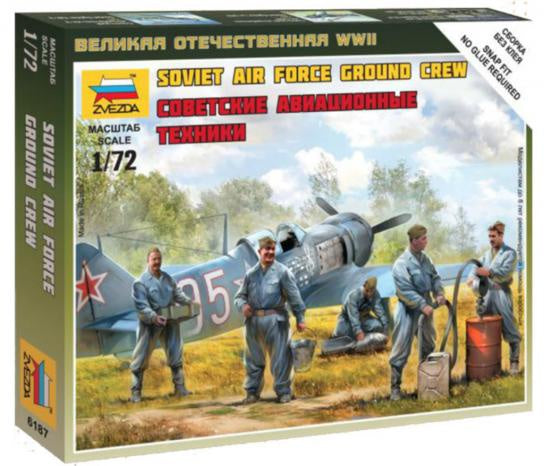Zvezda 1:72 Soviet Airforce Ground Crew
Zvezda 1:72 Soviet Airforce Ground Crew is backordered and will ship as soon as it is back in stock.
Couldn't load pickup availability
Delivery and Shipping
Delivery and Shipping
We use tracked courier for fast delivery New Zealand wide
Description
Description
At the outbreak of World War II, the Soviet Armed Forces was not yet ready or suitable for winning a war: Joseph Stalin had said in 1931 Soviet industry was "50 to 100 years behind" the Western powers. By the end of the war, Soviet annual aircraft production had risen sharply, reaching 40,241 in 1944. Some 157,261 machines were produced during the war, 125,655 being of combat types.
On the outbreak of war the Red Army Air Force consisted of the Long-Range Bomber Aviation (Дальнебомбардировочная авиация); Frontal Aviation, serving the various land forces fronts; Army Aviation; and Force Aviation, all subordinate to the State Defence Committee's Main Directorate of the Air Force of the Red Army. By mid-1943 Frontal Aviation absorbed Army and Force Aviation.
One of the main reasons for the large aircraft losses in the initial period of war with Germany was not the lack of modern tactics, but the lack of experienced pilots and ground support crews, the destruction of many aircraft on the runways due to command failure to disperse them, and the rapid advance of Heer troops, forcing the Soviet pilots on the defensive during Operation Barbarossa, while being confronted with more modern German designs. In the first few days of the invasion of the Soviet Union, the Luftwaffe destroyed some 2,000 Soviet aircraft, most on the ground, at a loss of only 35 (of which 15 were non-combat-related).
The principal VVS aircraft during World War II were the Ilyushin Il-2 Shturmovik armored ground attack monoplane and the series of AS Yakovlev OKB-115 designed single-engined fighters, beginning with the Yak-1 and its successors. The Il-2 became (at 36,183 built) the most produced military aircraft of all time, with the four main versions of Yak fighters (the Yak-1, −3, −7 and −9) being slightly more numerous, at a total of 36,716 among them. These two main types together accounted for about half the strength of the VVS for most of the war. The Yak-1 was a modern 1940 design and had room for development, unlike the mature 1935-origin Messerschmitt Bf 109. The Yak-9 brought the VVS to parity with the Luftwaffe and eventually allowed it to gain the upper hand, until in 1944, many Luftwaffe pilots deliberately avoided combat with the last and best variant, the out-of-sequence numbered Yak-3. The other main VVS types were Lavochkin fighters (mainly the La-5), the Petlyakov Pe-2 twin engined attack-bombers, and a basic but functional and versatile medium bomber, the Ilyushin Il-4.
The 31st Bomber Aviation Regiment, equipped with Pe-2s, was one of the first Guards bomber units in the Air Forces – the 4th Guards Bomber Aviation Regiment. The title was conferred on the regiment for its actions on the Leningrad Front in November–December 1941 during defensive operations and the Soviet counterattack near Tikhvin.
Payment & Security
Payment methods
Your payment information is processed securely. We do not store credit card details nor have access to your credit card information.




